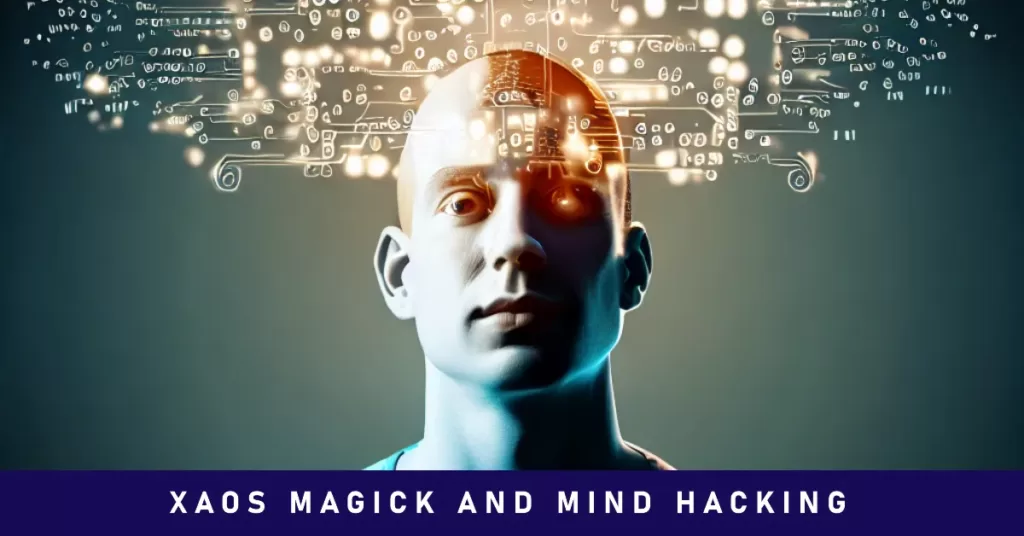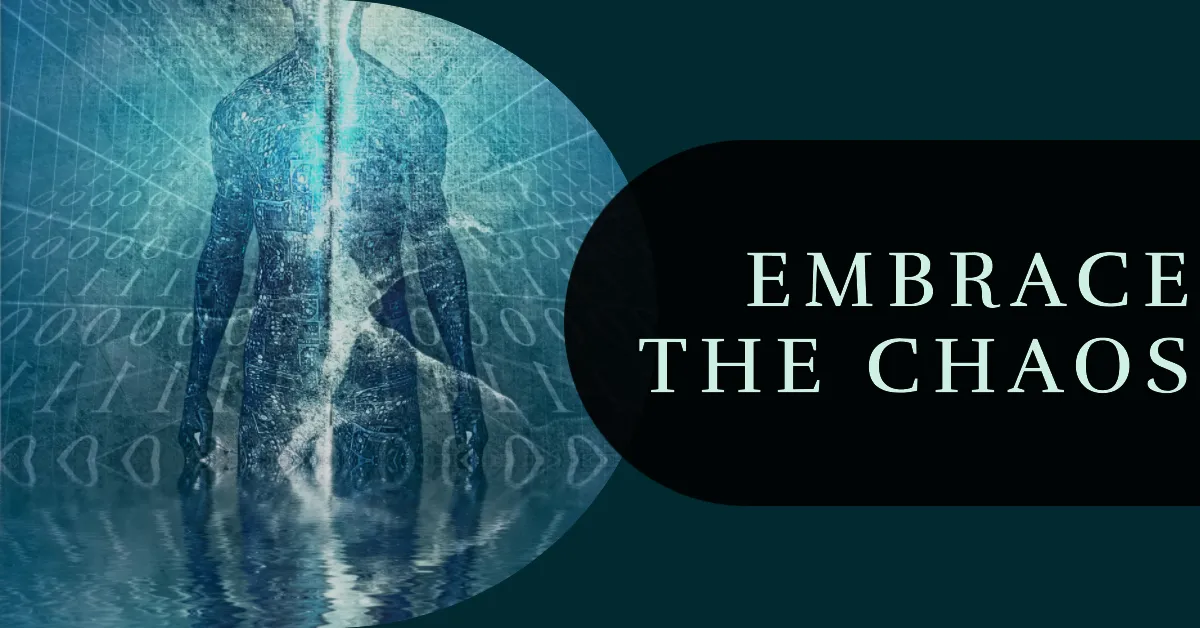As an intriguing exploration, many modern occult practitioners claim to incorporate elements of chaos magick into their practice. This article delves into the realm of chaos magick as a form of ‘mind hacking’, offering a critical analysis on its innovative, unconventional methods. Originating in the 1970s England, chaos magick rejects traditional notions of absolute truth and encourages manipulation of symbol-systems within occult practices. Drawing from various systems, including Austin Osman Spare’s beliefs, it propagates that beliefs shape perceptions that can be intentionally altered to mold one’s reality. The tradition borrows from other systems and promotes personal magickal creation while incorporating paradigm-shifting techniques, artificial beliefs, and modern mind-hacking principles. This method aids in breaking down conscious barriers resulting in a postmodern approach toward belief, deep meditation, mind programming, and ritualistic practices. This text attempts to unravel how chaos magick functions as a tool for deconditioning existing belief systems and attitudes thereby shaping individual realities through cognitive manipulation processes.
Table of Contents
- 1 Key Takeaways
- 2 The Concept of Kia Viewed as an Operating System
- 3 Using Gnosis to Override Psychic Censor
- 4 Sigils and Mind Programming
- 5 Using Servitors as Mental Applications
- 6 Using Samadhi to Connect with the Collective Consciousness
- 7 Biohacking: Controlling the Autonomic Nervous System with Meditation
- 8 Neurohacking: Using Mental Conditioning and Supplements to Enhance Cognitive Performance
- 9 Rituals as a Form of Self-Hypnosis
- 10 Frequently Asked Questions
- 11
- 12 Summary
Key Takeaways
Chaos magick serves as a powerful form of mind hacking. Its utilization of various tactics – from sigils to biohacking – facilitates the alteration of consciousness, enabling practitioners to manipulate their own reality. Despite potential doubts about its efficacy, it is essential to remember that these methods are not only unorthodox, but also lie within the realm of cognitive science. This connection between the mysterious and scientific renders chaos magick not only an interesting notion, but also an inventive instrument for mental transformation.
The Concept of Kia Viewed as an Operating System
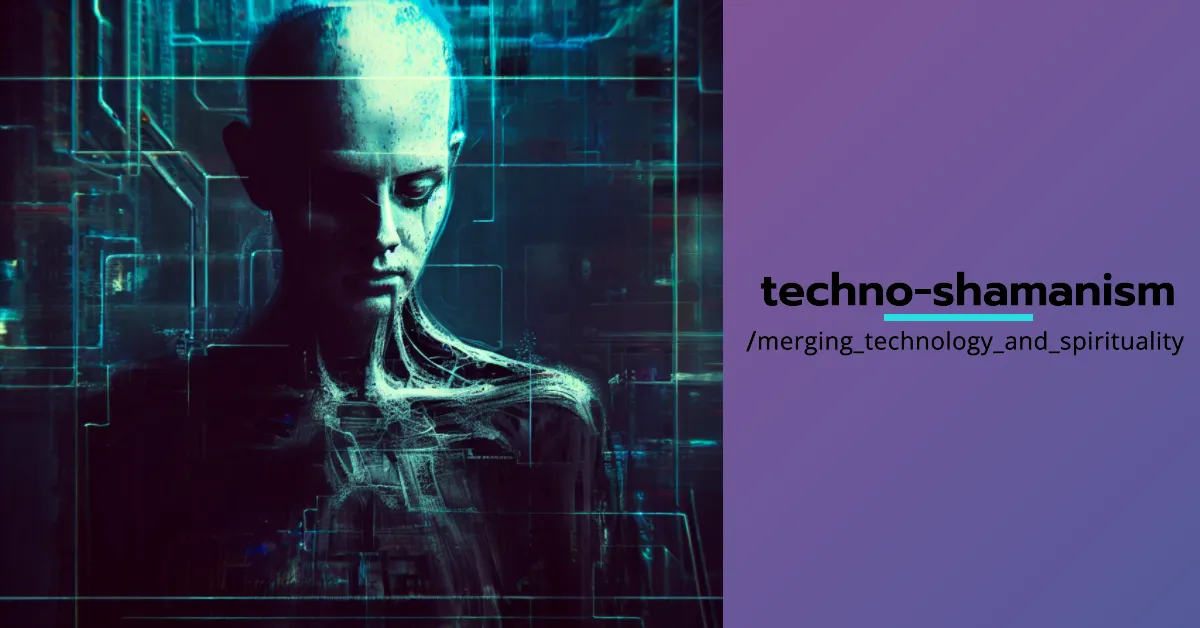
In the realm of chaos magick, the concept of Kia can be likened to an operating system, where it functions as a conduit between individual consciousness and the universal force of Chaos – a classic case of ‘as above, so below’. This interface allows for a unique way of traversing the various planes of existence by employing techniques akin to hacking. Instead of computer code, however, it is the subjective reality that is manipulated.
The idea here is to gain control over one’s personal perception system or ‘operating system’. Kia essentially becomes an operator’s manual on how one could alter their perceptual frameworks and harness occult powers. The mind becomes both the software program and programmer, capable of creating and shifting realities based on inputted commands or belief alterations.
Through mastering control over Kia (or ‘higher self-consciousness’), an individual can potentially extend their will into the universe by aligning with Chaos. This implies that accessing and manipulating this binary relationship between Kia and Chaos provides users with powerful abilities – very much like having full control of a computer’s operating system.
This perspective positions chaos magicians as spiritual explorers who investigate metaphysical codes in a quest for personal transformation. And just to be clear: this isn’t just about bypassing ethical considerations, but about understanding underlying systems at play within our psyche and the external environment that surrounds us. It’s about pushing cognitive boundaries via radical shifts to explore what lies beyond conventional interpretations – thus transforming mind-hacking from purely digital terrain into transpersonal exploration.
Using Gnosis to Override Psychic Censor
Achieving a state of gnosis serves as a means to bypass the psychic censor, thus allowing for an unencumbered flow of magickal workings into the unconscious. This altered state of consciousness, pivotal in chaos magick practice, is likened to manipulating mental programming or ‘hacking’ one’s mind. The concept is prominent in Austin Osman Spare’s system where symbols communicate desires to a universal mind dubbed Kia.
Chaos magicians employ various techniques to attain this brief no-mind state required for effective magick. These methods aim at silencing the conscious mind and fostering intense focus on the intended magickal goal. Three primary types of gnosis are outlined within chaos magick literature: inhibitory gnosis, ecstatic gnosis, and indifferent vacuity.
Inhibitory gnosis involves meditative practices such as breathing exercises or self-hypnosis that induce deep relaxation and quieten conscious thought processes. On another spectrum is ecstatic gnosis attained through heightened emotional arousal or sexual excitation; it strengthens energy levels conducive to casting spells. Indifferent vacuity presents another approach where spells are cast parenthetically with minimal cognitive involvement.
The pursuit of these varying states reflects multiple pathways toward achieving the same end – overriding the psychic censor. Each method offers its own advantages depending on individual predispositions and contexts, thereby highlighting chaos magick’s adaptability principle.
Through this lens, chaos magick can be seen as a form of psychonautical exploration; its practitioners venture into their own minds using various techniques like explorers charting unknown territories. They manipulate their cognitive maps via symbol systems and altered states – akin to reprogramming an operating system – allowing them to navigate reality more effectively according to their wills.
Sigils and Mind Programming
Sigilization serves as an essential technique within the realm of chaos magick, encompassing the creation and use of symbols to facilitate communication with the unconscious mind. This process originates from ancient magick where sigils represented deities or spirits and were employed in crafting talismans. Modern iterations draw on Austin Osman Spare’s innovative methods, further influenced by Brion Gysin’s combination of Spare’s practices with magickal squares.
The creation of sigils involves condensing letters into a monogram that signifies an occult entity or desire, thereby providing a direct channel to implant these desires into the subconscious. The complexity lies in reifying these sigils and subsequently forgetting them, allowing their work to be carried out without conscious interference. This technique reflects chaos magicians’ belief that deeply held convictions can have a profound impact on reality.
Evolving beyond personal use, sigils can transform into servitors – autonomous complexes of thoughts and desires – and egregores when they gain independence from individual control. These developments illustrate the potential power of sigilization in manipulating mental landscapes.
In an intriguing twist, Grant Morrison coined ‘hypersigil’ for extended works of art bearing magickal meaning while others view modern corporate logos as viral sigils. These observations highlight the pervasive nature of this form of mind programming across diverse sectors.
As such, chaos magick leverages sigilization as a potent form of mind programming for improved performance, transcending traditional boundaries between selfhood and external reality through artful symbol manipulation. This practice exemplifies postmodern tendencies within contemporary occultism while underlining its influence on shaping perceptions and beliefs.
Using Servitors as Mental Applications
Harnessing the power of servitors, as mental applications in the practice of contemporary occultism, serves to establish a further exploration into the realm of self-induced psychological constructs. As per chaos magick tradition, servitors are autonomous energies created by the magician for specific tasks, functioning independently from their creator’s consciousness. This autonomy signifies an advanced level of programmed intentionality compared to simpler methods such as sigils/symbols.
Servitors are entities that feed off free belief and can adapt themselves according to evolving circumstances or operate continuously until their task is achieved. Conceptually akin to Tibetan Buddhist tulpas or traditional familiars and elementals, these mental creations represent a significant aspect of mind hacking in chaos magick.
Gnosis and Kia, two fundamental concepts in chaos magick underpinning servitor creation, denote states of altered consciousness and individual psychic energy respectively. Accessing gnosis allows the magician to imprint intentions onto Kia – essentially programming it with a defined task before releasing it as an independent entity – similar to launching an application within one’s psyche.
The ability of these constructs to embody certain aspects of personal guardians, demons, angels, atavisms, or personifications of certain traits can also serve therapeutic purposes. It enables practitioners to confront certain aspects of their minds that may otherwise remain suppressed within their psyche. The process thus provides not only a method for achieving tangible goals but also forms part of a transformative journey toward self-awareness and growth.
This relatively innovative approach challenges conventional understanding while providing new perspectives into individual cognition manipulation techniques inherent in chaos magick practices. Through such means, chaos magick paves its path as a powerful form of mind hacking.
Using Samadhi to Connect with the Collective Consciousness
In the exploration of contemporary occult practices, samadhi emerges as a profound meditative state that has the potential to create a connection with the collective consciousness. This concept, which is found in various Eastern religious and philosophical traditions such as Hinduism, Buddhism, Jainism, Sikhism, and yogic schools, has been adopted by some chaos magicians who are looking to bridge their individual minds with the larger psychic reservoir of humanity.
Chaos magick is based on postmodernist principles that reject absolute truths and view all occult systems as arbitrary symbol-systems. It also advocates for eclectic borrowing from various spiritual traditions to construct personal magickal paradigms. Therefore, incorporating samadhi – a state characterized by equanimity and mindfulness – into this framework can be seen as a form of ‘mind hacking’.
Austin Osman Spare’s theories regard belief as psychic energy released through deconditioning rigid structures, and samadhi promotes the cultivation of an inquisitive and clear-minded outlook unencumbered by biases or preconceptions. In this context, achieving samadhi could potentially allow chaos magicians to access the collective consciousness – a vast pool of shared human experiences and knowledge – thus opening up new avenues for magickal practice.
From this perspective, samadhi becomes more than just a technique borrowed from Eastern mysticism; it transforms into an innovative tool within the arsenal of chaos magick. It allows practitioners to transcend their individual perspectives and connect with broader human narratives – an exercise in understanding that aligns perfectly with postmodern principles. The incorporation of such techniques demonstrates how chaos magick continues to challenge conventional wisdom while pushing boundaries in occult praxis.
Biohacking: Controlling the Autonomic Nervous System with Meditation
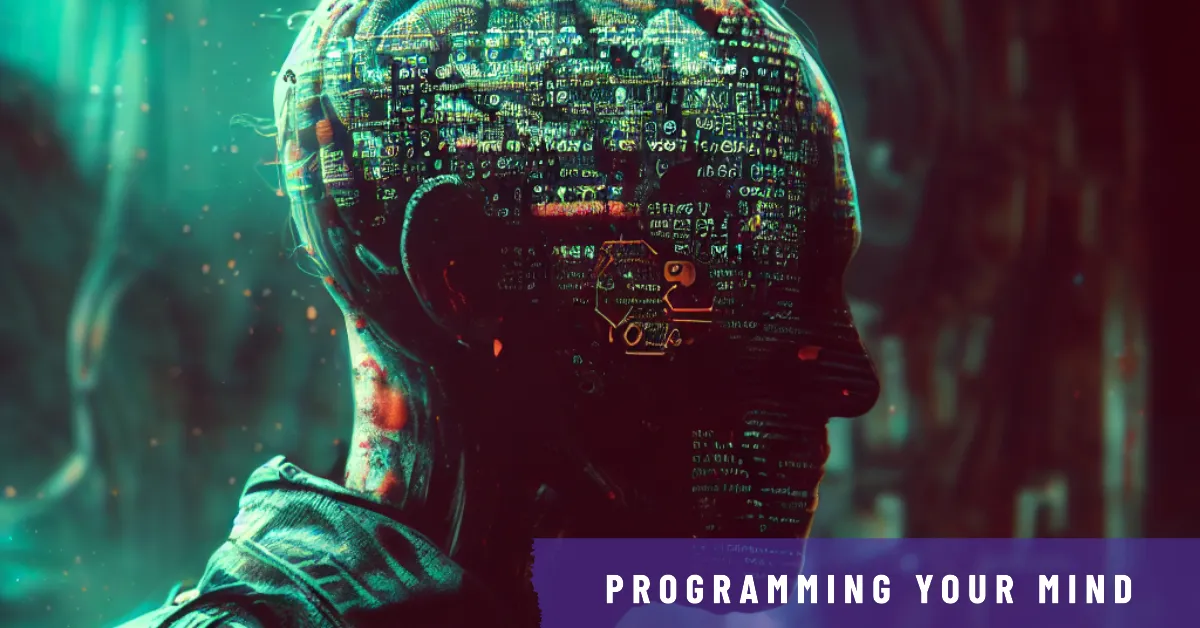
Exploring the vast potential of biohacking, it is possible to gain control over the autonomic nervous system (ANS) through disciplined meditation practices, thereby opening new dimensions of mental and physical mastery. The ANS, which regulates essential bodily functions such as heart rate and digestion, can be influenced by directed consciousness. This interplay between mind and body draws parallels with principles of chaos magick – where belief and intent are harnessed to effect change.
| Autonomic Nervous System | Chaos Magick | Meditation |
|---|---|---|
| Regulates bodily functions | Belief changes perception | Alters brain wave activity |
| Sympathetic division initiates fight-or-flight response | Embraces paradigm shifting for exploration | Promotes relaxation response |
| Parasympathetic division supports rest-and-digest actions | Liberates individual belief as a tool for ritual practice | Cultivates mindfulness and focused awareness |
The potential for controlling the ANS using meditation aligns with the chaos magick concept of manipulating belief systems to alter reality. In this context, the reality being altered is one’s physiological state. For instance, a practitioner could consciously shift their worldview or belief toward inner calmness during periods of stress, triggering a parasympathetic response that slows the heart rate and promotes relaxation.
This innovative approach combines modern science with age-old wisdom traditions. It blurs boundaries between disciplines often seen as disparate – neuroscience, occultism, psychology – mirroring chaos magick’s rejection of fixed models of reality in favor of fluidity and multiplicity.
By unifying these concepts, biohacking techniques like meditation and esoteric practices like chaos magick can offer a potent pathway for self-transformation. Through their synergy, individuals can harness the transformative power of both practices for personal growth.
Neurohacking: Using Mental Conditioning and Supplements to Enhance Cognitive Performance
Transitioning from the exploration of biohacking through meditation, a similar realm that intersects with chaos magick is neurohacking. This discipline focuses on augmenting cognitive performance using a variety of techniques and tools, such as mental conditioning and nootropic supplements.
Neurohacking emerged in the 1980s as a subset of biohacking, specifically aimed at enhancing brain function. It gained renewed interest in the early 2000s with advancements in neurosciences. The fundamental principle behind neurohacking resonates with the tenets of chaos magick: altering belief systems to modify perceptions and achieve desired effects.
A primary method employed by neurohackers involves chemical supplementation or nootropics – substances designed to boost cognitive function. These are either natural or synthetic compounds used for centuries but have recently gained popularity due to their potential to improve learning capabilities, resistance against stress, and overall enhancement of brain functions – this invokes memories of ancient shamans and healers using magickal potions to boost their minds and bodies.
Procedural training exercises present another method frequently utilized within neurohacking communities. Brain-training games aim to strengthen neuronal connections through repetitive tasks designed to challenge cognitive abilities progressively.
Non-invasive electrical current transmission methods like transcranial direct current stimulation (tDCS) also provide an innovative approach within this field by directly influencing neural activity levels. Simultaneously controversial yet intriguing, these practices mirror chaos magicians’ tendency toward unconventional methodologies that challenge established norms.
Thus, neurohacking offers another avenue through which individuals may explore self-modification techniques rooted in science rather than esoteric symbolism – highlighting further intersections between postmodern occultism and contemporary life-hacking movements.
Rituals as a Form of Self-Hypnosis
Delving into the realm of self-hypnosis, it becomes clear that certain ritualistic practices can be highly effective tools for inducing altered states of consciousness and bringing about desired changes in one’s psyche. Chaos magick stands out due to its unique approach to manipulating belief systems and unleashing the power of concentrated intent.
Chaos magick draws heavily from postmodernist thought and adopts elements from various magickal traditions, such as ceremonial magick and Discordianism. It emphasizes the practical use of belief as a tool for altering reality, prioritizing results over rigid adherence to specific systems or symbols. This malleable nature encourages practitioners to create their own rituals and symbolic systems based on personal preference, which may increase the potency of self-hypnotic techniques by stimulating greater emotional investment and psychological resonance.
- Chaos magicians often utilize ‘paradigm shifting’, wherein they take on different worldviews temporarily to achieve specific outcomes;
- The practice encourages individual creativity and autonomy within a broad framework;
- The cut-up technique is also used in chaos magick as a random method for divination and conjuration;
- A key aspect of chaos magick involves deconditioning oneself from limiting beliefs concerning self, society, and reality.
Such methods could be employed not just for esoteric purposes but also as cognitive strategies aimed at expanding mental flexibility, fostering creative problem-solving skills, overcoming indoctrinated biases or fears, and other applications. Chaos magick rituals thus serve twofold functions: they act both as transformative exercises in occultism and practical experiments in applied psychology – incredibly powerful mind-hacking tools that challenge traditional views about the boundaries between subjective experience and objective reality.
Frequently Asked Questions
Let’s now address common queries and provide clarity on the intriguing world of chaos magick. As an unconventional approach to spirituality and the manipulation of human mind, chaos magick offers a unique perspective on personal empowerment and self-transformation. Whether you are a beginner seeking to understand the basics or a curious individual delving deeper into this esoteric practice, this FAQ section will serve as a valuable resource to demystify the principles, techniques, and potential outcomes of chaos magick. Explore the answers to your burning questions and embark on a journey of exploration and self-discovery.
Q: What is the history and origin of chaos magick?
Chaos magick emerged in the 1970s as a radical new approach to the occult, challenging the traditional and often rigid structures of existing occult practices. It was developed by Ray Sherwin and Peter J. Carroll who together formed Illuminates of Thanateros. Drawing from Austin Osman Spare’s works, postmodernism, and other magickal systems, chaos magick emphasizes the power of belief manipulation over ritualistic symbolism.
Q: How does chaos magick differ from other forms of magick or occult practices?
Chaos magick stands apart from other occult practices in its emphasis on the malleability of belief systems, its rejection of any fixed truths, and its incorporation of a wide array of diverse influences ranging from postmodernism to pop culture. It is known for its versatility and individualized approach.
Q: What role does belief play in the practice of chaos magick?
In the practice of chaos magick, belief plays an important role. It suggests that our subjective perceptions can have an effect on reality and that by changing our beliefs, we can manipulate our experience of the world – a concept known as ‘belief as a tool’.
Q: Who are some of the most influential figures in the development of chaos magick?
Peter J. Carroll, Ray Sherwin, Austin Osman Spare, Robert Anton Wilson, and Phil Hine among several others are widely considered to be some of the most influential figures in the development of chaos magick. Spare’s exotic occult beliefs formed the basis of the practice, while Carroll and Sherwin are regarded as its founders. Crowley and Hine are also credited as important contributors.
Q: What are some common criticisms of chaos magick and how are they addressed by practitioners?
Chaos magick is often criticized for its apparent lack of established knowledge and structured models of reality. Practitioners of this practice, however, counter these criticisms by emphasizing the opportunity to develop individualized symbols and having an open-minded perspective on what is true.
Summary
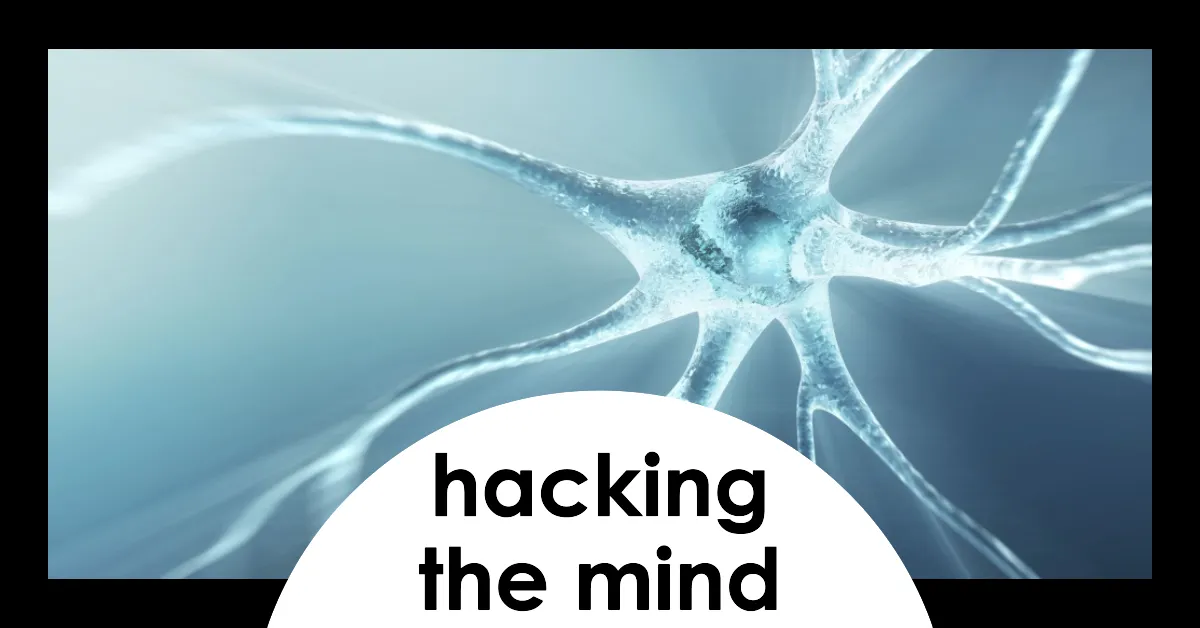
Chaos magick serves as a potent form of mind hacking. Its use of various techniques – from sigils to biohacking – allows for the alteration of consciousness, enabling practitioners to shape their own reality. Anticipating skepticism about its efficacy, it’s important to note that although unorthodox, these methods exist within the realm of cognitive science. This intersection between the esoteric and scientific establishes chaos magick as not just an intriguing concept, but also as an innovative tool for mental transformation.
For those deeply interested in the subject, it is described in greater detail in the book “Becoming a Psychonaut” which explores various magickal systems and describes mind-hacking practices as well as meditation techniques that can be used to successfully program the mind.

